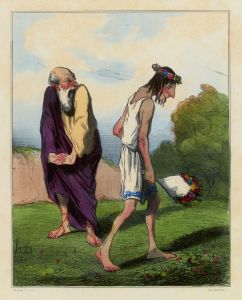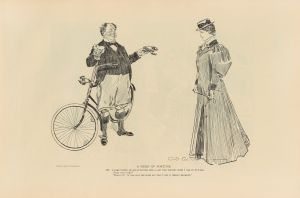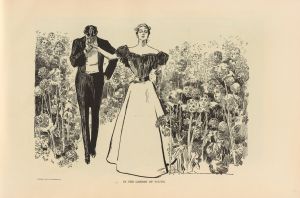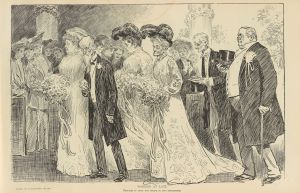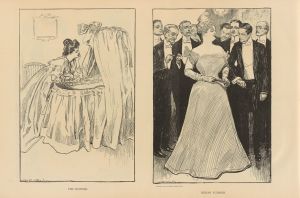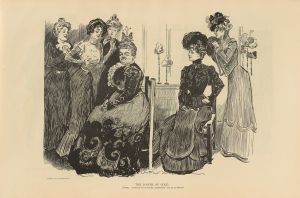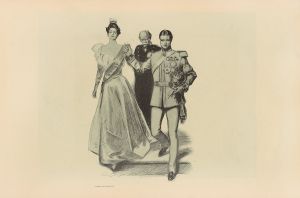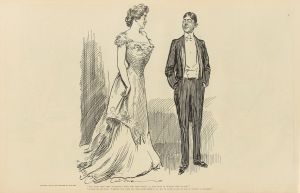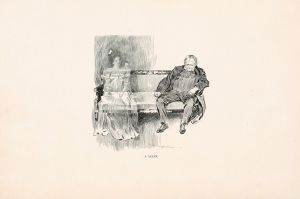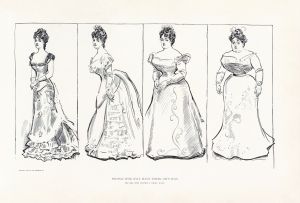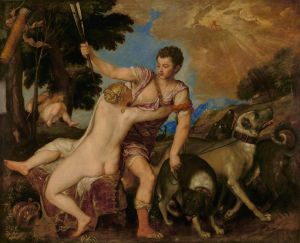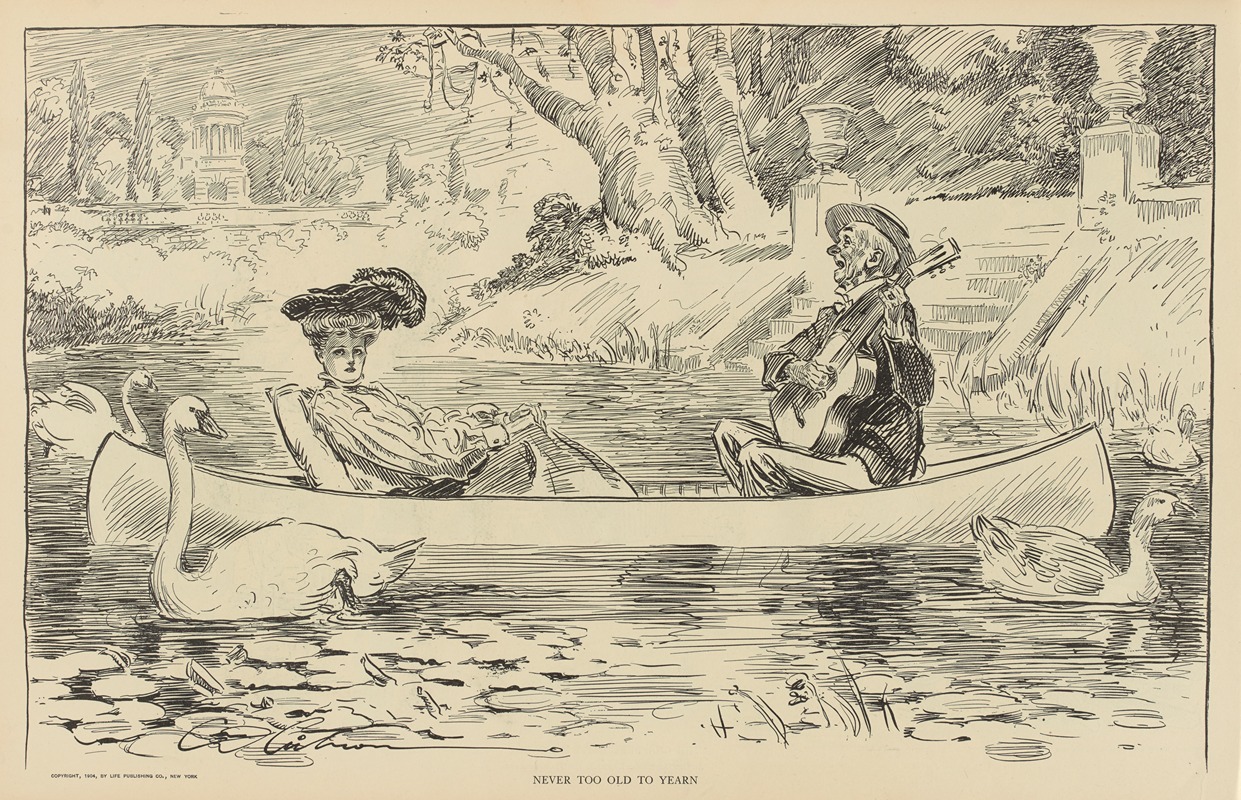
Never too old to yearn
A hand-painted replica of Charles Dana Gibson’s masterpiece Never too old to yearn, meticulously crafted by professional artists to capture the true essence of the original. Each piece is created with museum-quality canvas and rare mineral pigments, carefully painted by experienced artists with delicate brushstrokes and rich, layered colors to perfectly recreate the texture of the original artwork. Unlike machine-printed reproductions, this hand-painted version brings the painting to life, infused with the artist’s emotions and skill in every stroke. Whether for personal collection or home decoration, it instantly elevates the artistic atmosphere of any space.
Charles Dana Gibson was an influential American illustrator best known for his creation of the "Gibson Girl," an iconic representation of the American woman at the turn of the 20th century. His work captured the spirit and social dynamics of his time, often with a touch of humor and satire. One of his notable illustrations is "Never too old to yearn," which reflects Gibson's keen observation of human nature and societal norms.
"Never too old to yearn" is a black-and-white illustration that showcases Gibson's signature pen-and-ink style. The artwork typically features a scene that humorously depicts the theme of longing or desire, regardless of age. This illustration, like many of Gibson's works, is characterized by its detailed line work and expressive characters. The scene often includes elderly characters who are portrayed in a manner that suggests they still experience youthful desires or dreams, despite their advanced age. This theme resonates with the idea that human emotions and aspirations are timeless and universal.
Gibson's illustrations were widely published in popular magazines of the era, such as Life, Scribner's, and Collier's Weekly. His work was instrumental in shaping public perceptions of beauty, fashion, and gender roles during the late 19th and early 20th centuries. The "Gibson Girl," in particular, became a cultural phenomenon, representing the idealized American woman who was independent, confident, and socially active.
The humor in "Never too old to yearn" is typical of Gibson's style, which often included a satirical edge. His illustrations frequently commented on social issues, relationships, and the quirks of human behavior. By portraying older individuals with youthful desires, Gibson may have been highlighting the enduring nature of human emotions or poking fun at societal expectations regarding age and behavior.
Gibson's work, including "Never too old to yearn," remains significant for its artistic quality and its reflection of the cultural attitudes of his time. His ability to capture the subtleties of human expression and social interaction has left a lasting impact on the field of illustration. While specific details about the creation and publication of "Never too old to yearn" may not be extensively documented, the illustration fits within the broader context of Gibson's oeuvre, which continues to be celebrated for its wit, charm, and insight into the human condition.
Overall, Charles Dana Gibson's "Never too old to yearn" exemplifies his talent for combining artistic skill with social commentary, making it a noteworthy piece in the history of American illustration.






